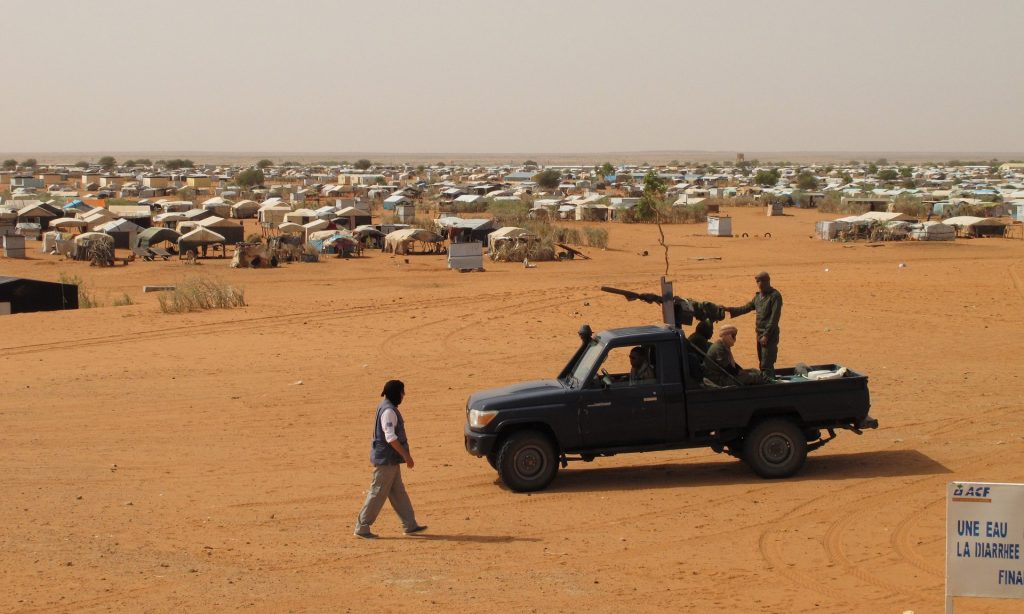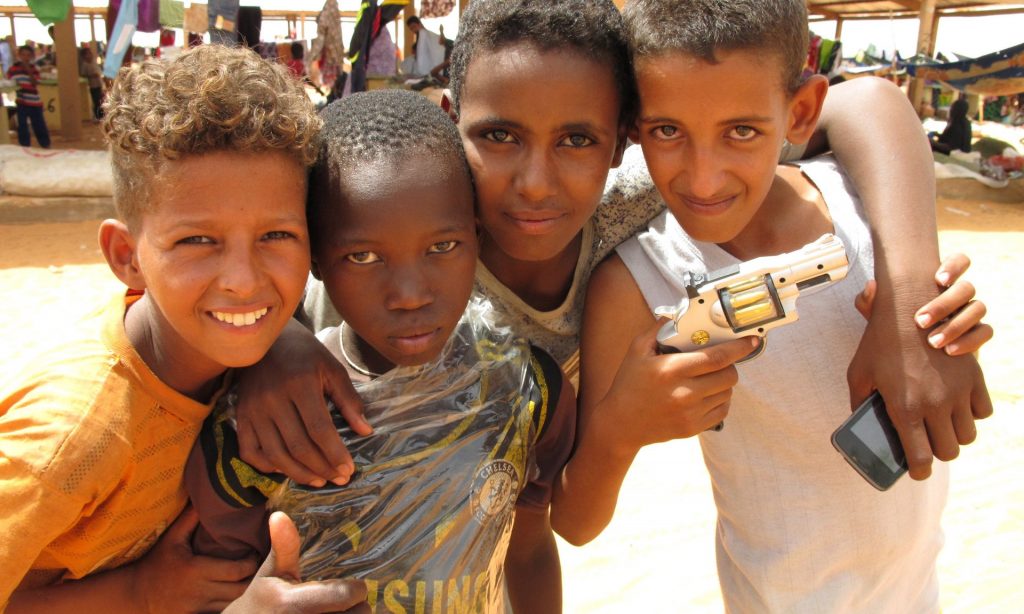
Hundreds of refugees have arrived in Mauritania, fleeing Mali’s spreading conflict, just a year after armed groups signed up for peace with the government in Bamako.
The arrival of more than 500 Fulani nomads from central Mali adds to the strain on Mbera camp in south-eastern Mauritania, where aid agencies are struggling to meet the needs of 42,000 mainly Tuareg and Arab refugees who have lived there since they fled northern Mali in 2012.
“I was beaten so many times by Malian soldiers,” says Aissata Diallo* who arrived last month with four children under the age of six from Nampala, in Mali’s central Ségou region. “The soldiers come to your home. If they cannot find the men, they tie up the women and hit and kick us. My brother’s wife had a miscarriage after she was beaten with a club.”
Souleymane Diabaté, the representative in Mauritania for the UN children’s agency, Unicef, expects more Fulanis to arrive from Mali, which is only 50km away. “I really fear the influx is going to grow. Every time there is an incident we see more refugees coming,’’ he said.
Ensuring their wellbeing is getting harder. The UN refugee agency, UNHCR, which manages Mbera, has secured only $3.6m (£2.7m) of its $15.5m budget for Mauritania this year. A third of staff at the camp have been cut.
The World Food Programme is struggling, too. Country representative Janne Suvanto said each refugee is supposed to receive food and cash worth $11 every month. But cuts are being made. “We had a full rations rupture in March and managed to distribute reduced rations in April and May. For August we do not have the funds to provide the 1,500 ouguiya (£3.20) cash component each refugee is supposed to receive,” he said.
Although the camp registers lower rates of severe acute malnutrition than the rest of Mauritania, other urgent issues worry the agencies. The camp – where much of Abderrahmane Sissako’s Oscar-nominated film Timbuktu was filmed in 2013 – has effectively become sparsely populated Mauritania’s seventh largest town. It is now competing with nearby Bassikounou for water. Agencies stress the need for measures to appease Mauritanians living nearby.
There are indications of high rates of gender-based violence and early marriage at Mbera. Secondary schooling and vocational training are minimal, raising fears that unoccupied boys could be tempted to join armed groups who are active only 70km away.
In zone 4, block 6, UNHCR staff have planted metal poles in the sand. Around these, since January, the Fulani community have built tents for 537 new arrivals. Diallo has received plastic basins and cooking pots from the UNHCR. Neighbours have given her rice, oil and lentils while she waits to register for rations.
Diallo says the family fled Mali after her husband was arrested by the army along with four others and taken to Bamako central prison. “They were tortured. One of the men died,” she claims, adding that she had to pay a bribe of 1 million CFA (£1,270) to secure her husband’s release, after which the family fled to Mbera.
She claims her husband is a shepherd with no links to Amadou Koufa, the Fulani Salafist jihadi who is one of Mali’s most wanted men. Koufa’s Macina Liberation Front (MLF) wants to revive a 19th-century fundamentalist empire that spanned southern and central Mali – from the present border with Ivory Coast to Timbuktu.

Boys pose with a toy gun at the marketplace in Mbera refugee camp.
Diallo’s claims of abuse at the hands of the army are impossible to verify but they tally with reports gathered by Human Rights Watch. Nomadic Fulanis have a fractious relationship with the rest of the population and have long claimed to be victimised by the army and gendarmerie. A revenge motive may in part explain the 19 July Islamist attack on Nampala army base in which 17 Malian soldiers were killed.
Diallo looks blank when asked whether she knows of Koufa, his radical Dawa sect, or the MLF. “I do not know why the army comes for us,” she says. “We are not in any armed group. We are shepherds. They just do not like us.”
*Name changed to protect her identity
- Alex Duval Smith travelled to Mbera with support from the EU, which is one of its main donors

